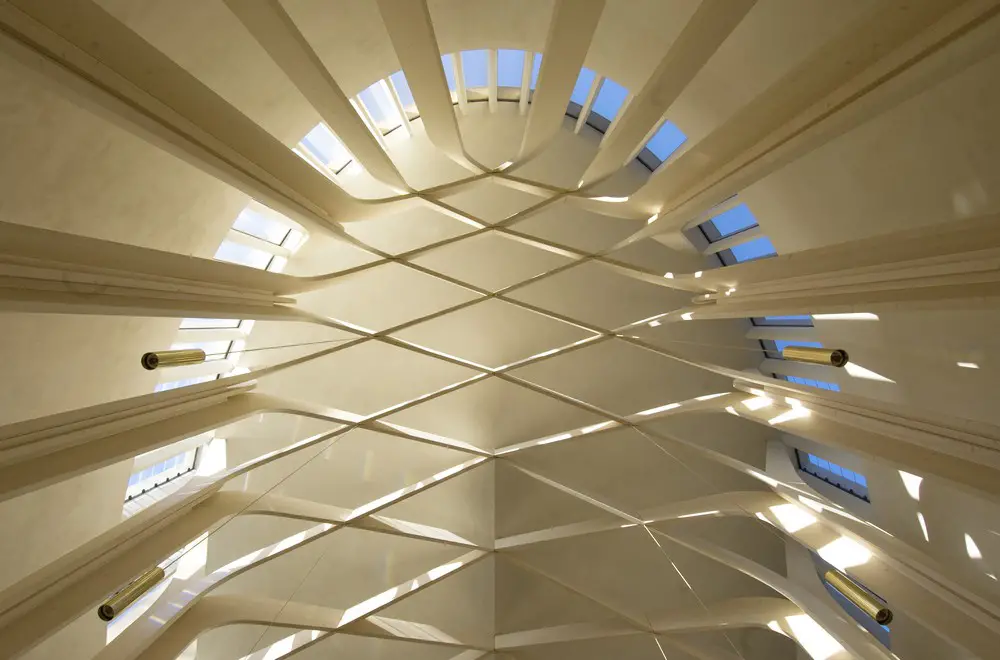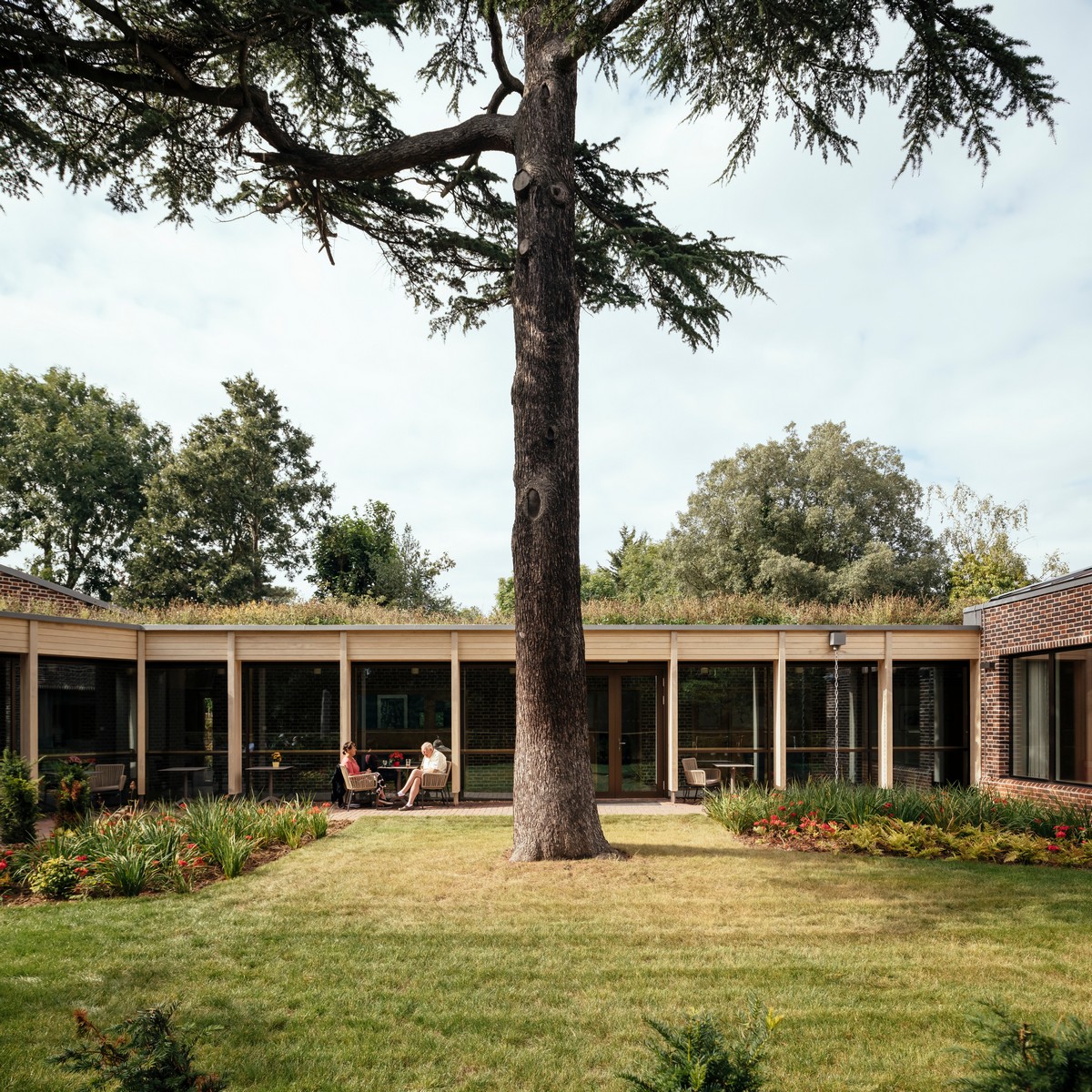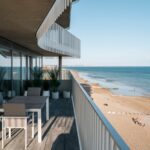Jencks Award 2016 Winner, Níall McLaughlin Prize, UK Architecture, RIBA News
Jencks Award 2016 Winner
Níall McLaughlin wins Royal Institute of British Architects Jencks Award
post updated 26 Jan 2021 ; 22 + 21 Sep 2016
Jencks Award 2016 Winner News
Níall McLaughlin wins 2016 RIBA Charles Jencks Award for architecture
21 September 2016 – The Royal Institute of British Architects (RIBA) has today (21 September 2016) announced Níall McLaughlin, founder of Niall McLaughlin Architects, as winner of the 2016 RIBA Charles Jencks Award.
Níall McLaughlin architect:

photo from RIBA
The award is given to an individual or practice that has recently made a major contribution internationally to both the theory and practice of architecture. It will be presented on Tuesday 25 October at the RIBA in London, where the winner will also give a public lecture chaired by Charles Jencks.
The judging panel for the 2016 RIBA Charles Jencks Award consisted of Charles Jencks (landscape designer, architectural theorist and writer), RIBA President Jane Duncan, Lily Jencks (Director, Lily Jencks Studio and JencksSquared), Deyan Sudjic (Director, Design Museum) and Brett Steele (Director, Architectural Association School of Architecture), and was chaired by David Gloster (RIBA Director of Education).
Bishop Edward King Chapel building exterior:
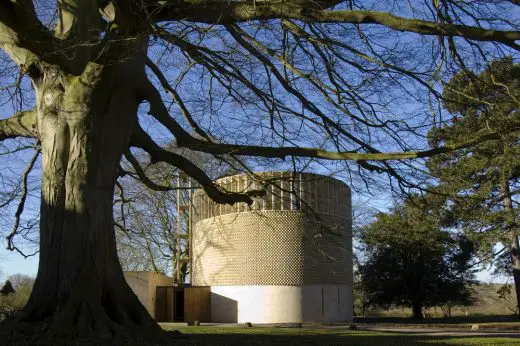
photo © Niall McLaughlin Architects
RIBA President Jane Duncan said:
“Niall’s body of work exemplifies the spirit of this award, which recognises the ability to seamlessly and in this case, beautifully, build theory into one’s practice. I am in awe of the materiality and the craftsmanship, of the dedication, the collaborative relationships and the contextual sensitivity with which Niall’s buildings are created, all of which make him a most-deserving winner of the 2016 RIBA Charles Jencks Award.”
Bishop Edward King Chapel building:
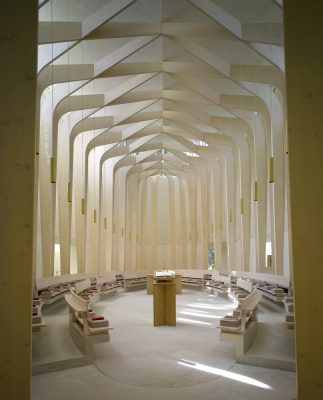
photograph © Nick Kane
Speaking about Níall McLaughlin, Charles Jencks said:
“Niall McLaughlin is a great inspiration for architects today, especially the young, because of his masterful skill in drawing from all traditions – classicism, modernism, postmodernism. All the “isms” are under his belt, not on his back, and he extends them all through the commitment to architecture as an art and professional practice.”
On winning the 2016 RIBA Charles Jencks Award, Níall McLaughlin said:
“I am honoured to receive the RIBA Charles Jencks Award; particularly given its special emphasis on a simultaneous engagement with theory and practice. For me, architectural practice includes drawing, writing and building as interlinked activities. It is a continual ferrying between an engagement in the natural processes required to bring something reliable and concrete into being, and the need to clear a space for the expression of doubt, possibility and a half-glimpsed ideal. I acknowledge the distinguished list of previous winners of this award; and I am very grateful for the recognition.”
Bishop Edward King Chapel building interior:
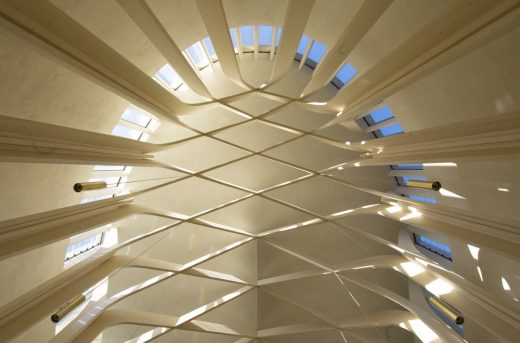
photo © Niall McLaughlin Architects
Biography of Niall McLaughlin
Niall McLaughlin was born in Geneva in 1962. He was educated in Dublin and received his architectural qualifications from University College Dublin in 1984. He worked for Scott Tallon Walker in Dublin and London between 1984 and 1989.
Niall established his practice in London in 1990. Niall McLaughlin Architects is now a studio of around 30 architects based in Camden, London. Significant projects include the Bandstand (Bexhill 2001), Pier Cafe (Deal 2006), Dirk Cove House (Cork 2004), ARC Building (Hull 2005), Goleen House (Cork 2008), Bishop Edward King Chapel (Oxford 2013), Olympic Athletes’ Housing (London 2012), Peabody Housing (Whitechapel 2015), and Somerville Student Residence (Oxford 2010). He is currently working on museum designs for the Natural History Museum in London and Auckland Castle in Durham.
Athletes Housing:

photograph © Niall McLaughlin Architects
Niall won Young British Architect of the Year in 1998. He was named as one of the BBC’s Rising Stars in 2001 and his work represented Britain in a US exhibition Gritty Brits at the Carnegie Mellon Museum. Niall was made a Honorary Royal Designer for Industry (2015) and he represented Ireland at the Venice Biennale Architettura 2016. Niall is Professor of Architectural Practice at the Bartlett School of Architecture, University College London. He was a visiting professor at the University of California Los Angeles from 2012-2013, and was appointed Lord Norman Foster Visiting Professor of Architecture at Yale for 2014-2015. Niall lives in London with his wife Mary, son Diarmaid and daughter Iseult.
Athletes Housing facade:
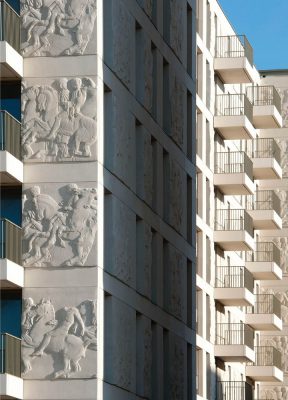
photo © Niall McLaughlin Architects
Citation by Charles Jencks
“Niall McLaughlin gives the profession of architecture a good name. Staying within the confines of a tradition – broadly put – between classicism and modernism, he is nonetheless not worried about changing both by hybridising them, nor frightened of being called postmodern. In the time honoured manner of Mozart, he takes well known themes and tropes – the classical repertoire of the five platonic solids and their cognate modes (ellipse, parabola, pointed arch and so on) – and plays new games with them.
This Free Style Classicism of vigour and light is the Old Game as defined by Lutyens, but it is orchestrated very lightly without being etiolated. His structural logic carried out with their repetitive geometries creates a new kind of Optical Architecture. The Bishop Edward King Chapel has its primitive strength, delicacy and content — virtues not usually found together – and ones reminiscent of James Stirling.
Alzheimers Respite Centre building:
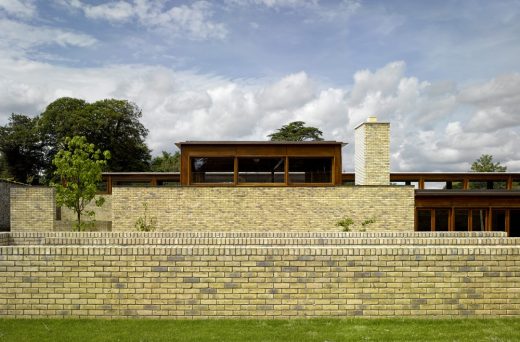
photo © Nick Kane
His Alzheimer’s Centre in Dublin is one of the most subtle and appropriate designs for a sensitive building task I know. It stems from long careful research on the affliction, and was reinterpreted for this year’s Venice Biennale in his installation ‘Losing Myself’. McLaughlin’s planning and city design are equally based in particular and local research.
Materiality, geometry, light, metaphor, abstractions, ornament and elegance are the obvious qualities. Quotations and iconic expression are sometimes prominent, and unembarrassed, unlike much other apologetic work today. Direct and bold, McLaughlin will even use Neo-Grec Horses as mass-produced panels for Olympic Housing, and not be accused of pastiche. Obviously he has a strong enough belief in eclectic practice to overcome the usual taboos that straightjacket architects.”
Alzheimers Respite Centre concept:
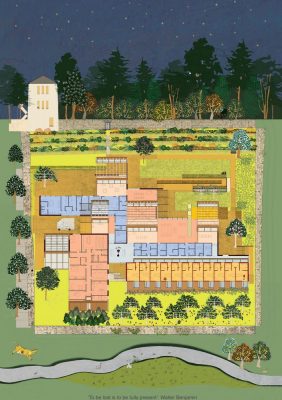
photo © Niall McLaughlin Architects
RIBA Charles Jencks Award for architecture
The RIBA Charles Jencks Award is awarded annually to an individual (or practice) that has recently made a major contribution simultaneously to the theory and practice of architecture. Winners are invited to deliver a lecture at the RIBA. Charles Jencks is a landscape designer, architectural theorist and writer, best known for his writing on post-modern architecture and as Trustee and Co-founder of Maggie’s Cancer Caring Centres with Maggie Keswick.
The 2016 Charles Jencks Award lecture will take place at the Jarvis Hall, RIBA, 66 Portland Place, London W1B 1AD on Tuesday 25 October at 7pm. Nearest tubes are Oxford Circus, Regent’s Park and Great Portland Street. For bookings, visit http://www.architecture.com/WhatsOn/October2016/2016RibaCharlesJencksAward.aspx
The Royal Institute of British Architects (@RIBA) is a global professional membership body driving excellence in architecture. We serve our members and society in order to deliver better buildings and places, stronger communities and a sustainable environment www.architecture.com
Jencks Award 2016 image / information from Royal Institute of British Architects Jencks Award
2015 RIBA Charles Jencks Award won by Herzog & De Meuron
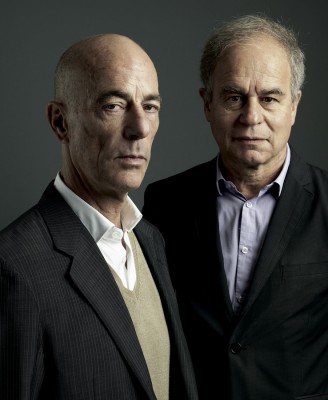
image from architect
Jencks Award Previous Winners
2015 Herzog & De Meuron
2014 –
2013 Benedetta Tagliabue
2012 Rem Koolhaas
2011 Eric Owen Moss
2010 Stephen Holl
2009 Charles Correa
2008 Wolf D. Prix (Coop Himmelb(l)au)
2007 Ben van Berkel and Caroline Bos (UN Studio)
2006 Zaha Hadid
2005 Alejandro Zaera-Polo and Farshid Moussavi (Foreign Office Architects)
2004 Peter Eisenman
2003 Cecil Balmond
15 Oct 2013
Jencks Award 2013
Benedetta Tagliabue to receive 2013 RIBA Jencks Award
Tuesday 19 November: Lecture by Benedetta Tagliabue, chaired by Charles Jencks at the RIBA, 66 Portland Place, London, W1 (details on the e-architect Events page)
The Royal Institute of British Architects (RIBA) is pleased to announce that Benedetta Tagliabue is the recipient of the 2013 RIBA Jencks Award, which is given annually to an individual or practice that has recently made a major contribution internationally to both the theory and practice of architecture. The award will be presented to Benedetta Tagliabue on Tuesday 19 November at the RIBA in London, where she will give a public lecture, chaired by Charles Jencks.
Benedetta Tagliabue studied architecture at the Istituto di Architettura di Venezia (IUAV) and is now director of architecture firm EMBT Miralles Tagliabue, founded in 1994 in collaboration with Enric Miralles, and based in Barcelona and Shanghai. Benedetta’s studio works in the fields of architecture, design of public spaces, rehabilitation, interior and industrial design. Among her most notable built projects are the RIBA Stirling Prize-winning Scottish Parliament, Diagonal Mar Park, the Santa Caterina market in Barcelona, Campus Universitario de Vigo, and the Spanish Pavilion at the 2010 Shanghai World Expo. Current projects include The Business School of Fudan University in Shanghai, office towers in Taiwan and Taichung, public spaces of HafenCity in Hamburg Germany, and official protection dwellings in Madrid.
Benedetta’s poetic architecture, always attentive to its context, has won international awards in the fields of public space and design. She has been a visiting professor at Harvard University, Columbia University and Barcelona ETSAB, lecturing regularly at architecture forums and universities around the world. In 2004 she received an honorary doctorate from the Faculty of Arts and Social Sciences at Edinburgh Napier University. Benedetta is the director of the Enric Miralles Foundation, whose goal is to promote experimental architecture in the spirit of her late husband and partner Enric Miralles.
Citation on Benedetta Tagliabue by Charles Jencks:
“Think Global – Act Local”. Many global architects have paid lipservice to this maxim but only a handful have lived up to the challenge and had the patience and skill to turn it into a new art. Benedetta Tagliabue, with the firm that she and her late husband Enric Miralles started, has developed a new sort of architectural practice and way of building.
Taking time and incorporating the depth of complexity that only time allows, her group and loyal team have together created what has been called an “agglutinative architecture”. I wouldn’t want to burden anyone with this pretentious and hard to pronounce phrase except in order to make them stop dead in their tracks, take a hard look at an urban scheme of EMBT, and think. It is made from many simple parts and put together as a ‘compound idea of many forms’. It derives an ornament from this process of agglutinate design, and many constructional methods directly expressed.
It has the pleasant informal rhetoric of an adhocist approach. It presents the Time City as continual work in progress. It is tough, warm, surprising, complex, open-ended and very like the city from which it springs, Barcelona. While other architects there have rejected, or been frightened of extending some lessons of its master, Antoni Gaudi, EMBT has honoured this tradition without letting it down. Of no other practice can that be said. The theory of EMBT is always in the practice of this ‘time architecture of compounds’ and the unique office mentality that Benedetta Tagliabue has continued with today.
Charles Jencks announcing the recipient of the 2013 award:
“I am delighted to announce that the judging panel of the 2013 RIBA Jencks Award was unanimous in premiating the extraordinary talent and career that Benedetta Tagliabue has had, particularly while leading the EMBT Miralles Tagliabue studio to create a tough, warm, surprising, complex and open-ended architecture that is very much like the city from where it springs, Barcelona.”
The judging panel for the 2013 RIBA Jencks Award comprised landscape designer, architectural theorist and writer, Charles Jencks; Lily Jencks (Founder of LJA+Land and JencksSquared); Stephen Hodder (RIBA President and Chairman of Hodder and Partners); Farshid Moussavi (Founder and Principal of Farshid Moussavi Architecture and Professor in Practice of Architecture at Harvard University Graduate School of Design); Brett Steele (Director of the Architectural Association School of Architecture); and David Gloster (RIBA Director of Education) as non-voting Chair.
Jencks Award 2013 image / information from Royal Institute of British Architects Jencks Award
Location: UK
Jencks Award 2012
Rem Koolhaas to receive 2012 Jencks Award

picture from architect
Jencks Award 2012
Jencks Award 2010
Steven Holl Receives the 2010 Jencks Award

photo : Courtesy Steven Holl Architects © Shu He
Jencks Award 2010
Architecture Awards
Jencks Award winner in 2010 : Steven Holl
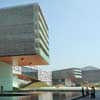
image from architect
Comments / photos for the RIBA Jencks Award 2016 – Architecture Prize page welcome
Website : RIBA Jencks Award

